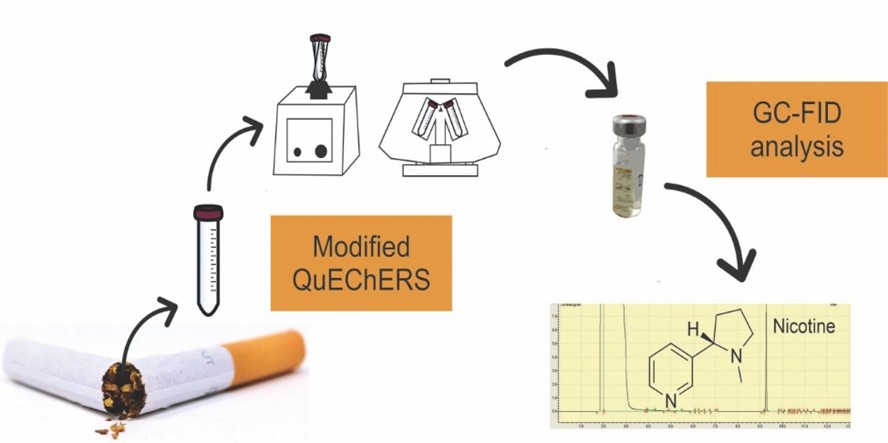Determination of Nicotine in Cigarette Tobacco Smuggled to Brazil by Modified QuEChERS Methodology

- Doehlert matrix,
- Nicotine,
- QuEChERS,
- Smuggled cigarettes
Copyright (c) 2022 Orbital: The Electronic Journal of Chemistry

This work is licensed under a Creative Commons Attribution-NonCommercial-NoDerivatives 4.0 International License.
Abstract
The study of cigarette authenticity in Brazil is important due to increasing consumption of contraband cigarettes. Nicotine concentration is an important parameter reflecting the quality of tobacco used in the production of these cigarettes. Simple methods for this determination, which produce reduced waste, are environmentally and industrially important. The nicotine concentration of smuggled cigarette tobacco was determined by the QuEChERS method, requiring some modifications, such as decreasing the volume of the extractor solvent, changes in pH, and removal of the sample hydration step. Quantification was performed by gas chromatography using a flame ionization detector. The Doehlert matrix design was used to optimize the method. The extraction recoveries ranged from 97.5% to 99.6%, with relative standard deviation (RSD) ≤ 2.5% and limits of detection and quantification of 0.6 mg L-1 and 2.5 mg L-1, respectively. The method was sensitive and accurate for the detection and quantification of nicotine. The nicotine concentration in contraband cigarettes was found to be lower than that observed in legal cigarettes. The method was successfully applied to real samples of smuggled and legal cigarettes, providing a robust method for routine analysis and proving the need for more studies on quality control of smuggled cigarettes in Brazil.





